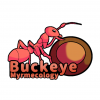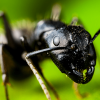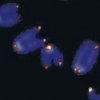Ok, since I've got a little time at the moment, I'm going to do a post hibernation updated census, along with approximate worker counts. If no queen numbers are listed, assume one. Just a heads-up, this isn't what normal updates will look like, I'll do a couple of these every year once I have enough new ants/enough have died or been sold/traded
Colonies:
Camponotus herculeanus 50-70 workers, small amount of brood
Camponotus subbarbatus ~30 workers, a couple larvae
Tetramorium immigrans 50-70 workers, many larvae
Tapinoma sessile many queens, 100+ workers, medium amount of brood
Founding colonies:
Camponotus chromaiodes x2 c1: 10-15 workers, large larvae batch c2: 13-15 workers, medium larvae
Camponotus novaeborascensis 3-6 workers, huge amount of larvae
Camponotus pennsylvanicus x2 c1: 10-11 workers, large batch of brood c2: 2 workers, 20+ eggs/larvae
Crematogaster sp 18 workers, decent batch of larvae/eggs
Formica pallidefulva (moved due to large worker loss) 5-10 workers, possibly brood
Formica subanescens 5 workers, no brood
Myrmica sp 5 queens, 1 worker, no brood
Lasius americanus 5 workers, 3 larvae
Founding queens
Camponotus nearcticus (moved due to loss of workers to diapause) 2 larvae
Formica subsearicea no brood
Post-diapause colony/founding queen count is 16. 4 colonies, 10 founding colonies, and 2 queens. Total species count is 14. 6 Camponotus, 3 Formica, 1 Tetramorium, 1 Tapinoma, 1 Crematogaster, 1 Myrmica, 1 Lasius.
Most deaths during hibernation were founding queens, leaving only 2 left. There were no founding colony deaths, but there was one colony death, my Aphaenogaster rudis colony. There was one non diapause related death so far, my Myrmecina americana queen, for unknown reasons.
Sent from my Pixel XL using Tapatalk
Edited by madbiologist, March 1 2020 - 6:35 PM.
so strange they just turned on each other??? My question is if you introduce a new queen will they not kill her?



















 Although P. occidentalis is native here, but can be kept anywhere now.
Although P. occidentalis is native here, but can be kept anywhere now.




























